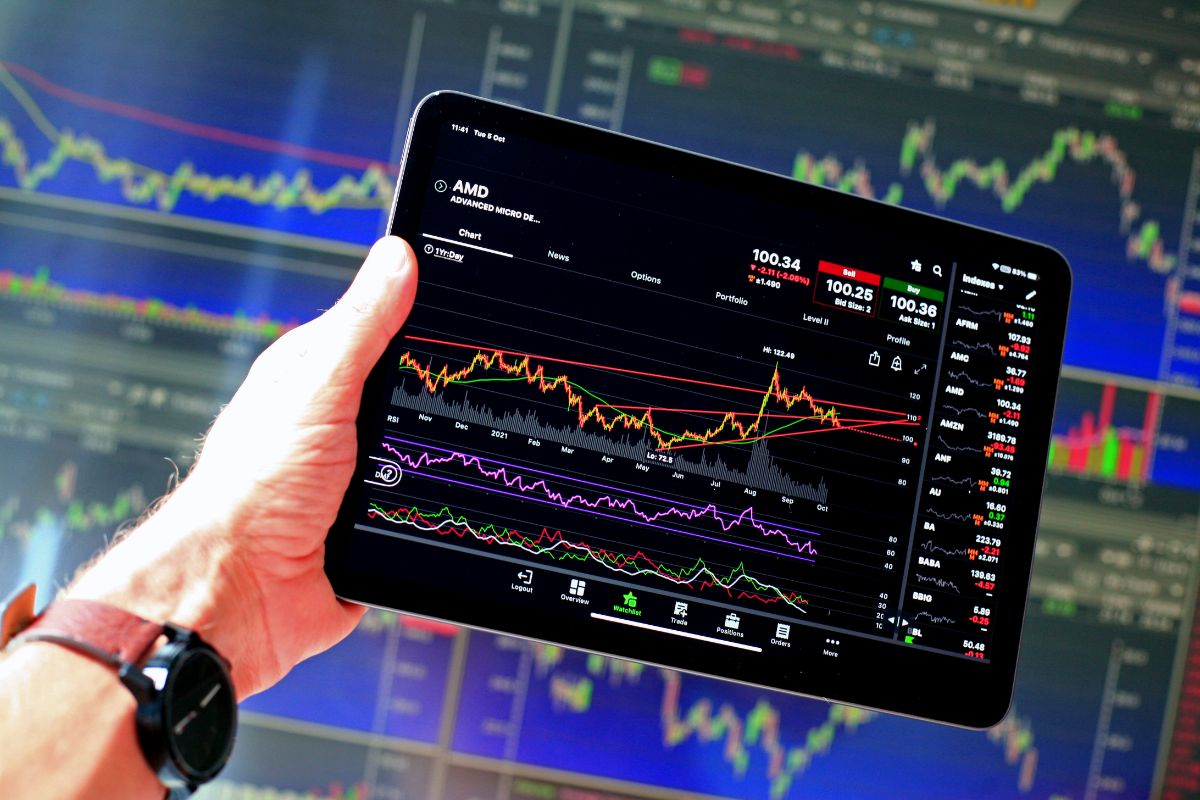Learning how to make money from the stock market for the first time can sometimes feel like swimming in a sea of new terminology and abbreviations that you don’t understand.

Abbreviations are supposed to make things easier in the long term, but coming across terms such as ‘PT’ with little context can be frustrating, especially if you’re still getting to grips with how stock trading and investing works.
In today’s article, we’re going to be explaining what PT means in the context of stocks and delving a little deeper into this meaning.
What Does PT Mean In Stocks?
The first thing you need to know is that if you see the letters ‘PT’ in the context of stocks and investing, they probably stand for Price Target.
Price Target is a term you’ll need to get familiar with if you’re serious about investing, so let’s talk about what it means and why it matters.
What Is A Price Target?
A price target is an estimate made by financial analysts that is designed to let traders and investors know the fair future value of a security based on various factors.
The point of a price target is to help traders know when to buy and sell, which is crucial information.
Typically, setting a price target involves evaluating what the stock is worth currently as well as what it is likely to be worth in 12 to 18 months’ time.
This information is then made public to assist traders in their research, so if you haven’t been making use of price targets until this point, you should definitely start today!
How Do Analysts Calculate Price Targets?

If you’re wondering how analysts work out price targets for securities, it’s a fairly complex process involving multiple factors, which we’re going to cover in this section.
One of the main factors involved in deciding on a price target for a security is the P/E ratio (price-earnings ratio). This is a ratio of the company’s share prices and the earnings a company makes per share.
Multiplying the current market price by the company’s trailing earnings over 12 months can be a good way to come up with a price target estimate.
With that being said, a P/E ratio isn’t always a reliable way to calculate a price target, particularly when it comes to volatile stocks or speculative stocks. That’s why analysts will also use other factors to provide them with more guidance in these situations.
If stock is speculative or volatile, most analysts will also look at the balance sheet provided by the company as well as various other financial statements. These are then compared to current economic statistics, historical results, and competitors to provide an estimate.
Technical analysts are also involved in the process of calculating price targets. These analysts will typically look at factors like price action, indicators, price momentum, trends, and statistics to work out how much a security will be worth in the near future.
Usually, they will look for defined resistance and support areas by charting price movements to finalize the price target.
Frequently Asked Questions
Where Can I Find Price Targets?
Price targets are normally published by analysts in the form of company-specific research reports. They will usually be provided alongside the recommendations for buying, holding and selling stock for that particular company.
You can find price targets for individual companies in financial news media outlets, so if you’re looking for price targets, you should make this form of media a core part of your research.
Are Price Targets Accurate?
It’s important to understand that while price targets are calculated by experienced financial analysts using many relevant factors, they are only an estimate at the end of the day.
The average accuracy rate for 12 to 18-month price targets is about 30%. However, just because most price targets are not 100% accurate doesn’t mean they can’t be helpful.
Using price targets can give you a general idea of whether stocks are likely to appreciate or depreciate in value within the next 18 months, and this information alone is crucial if you’re trying to decide whether to buy, hold, or sell.
How Important Are Price Targets?
Price targets should form a fundamental part of your research and strategy if you’re investing or trading, but they shouldn’t be the only thing you base your decisions on.
Other factors you should consider alongside the price target for a company include the company’s regulatory filings and financials, plus other financial resources.
How Often Do Stocks Meet Price Targets?
We mentioned earlier that price targets usually have roughly 30% accuracy, but this doesn’t mean that stock prices fall short of their price targets 70% of the time.
In fact, after 12 months, 24% of stocks either meet or exceed their price targets, whereas 45% exceed or meet them before the end of the 12 month period.
How Can I Predict My Own Price Targets?
Investors and traders are advised to come up with their own price targets through their own research rather than relying solely on the targets estimated by analysts.
To predict price targets yourself, you need to understand that the trailing P/E ratio is the sum of the price (the variable you’re looking for) divided by the estimated EPS.
So, if you have the P/E ratio and the EPS (earnings per share), you can reverse the equation to work out the price target.
Final Thoughts
In the world of stocks, PT stands for Price Target.
Price targets are estimates made by financial analysts as well as traders and investors that predict what a security will be worth by the end of a 12 or 18-month period.
Price target estimates are based on factors such as the price/earnings ratio for a company, the company’s earnings per share, and financial statistics found on balance sheets and statements.
For volatile or speculative stocks, other information may be needed to make the estimate more accurate.
- Dividend Growth Investing for Millennials - February 27, 2025
- The Ultimate Guide to Investing in Precious Metals Today - December 6, 2024
- Essential Cryptocurrency Trends: What You Need to Know - December 6, 2024

